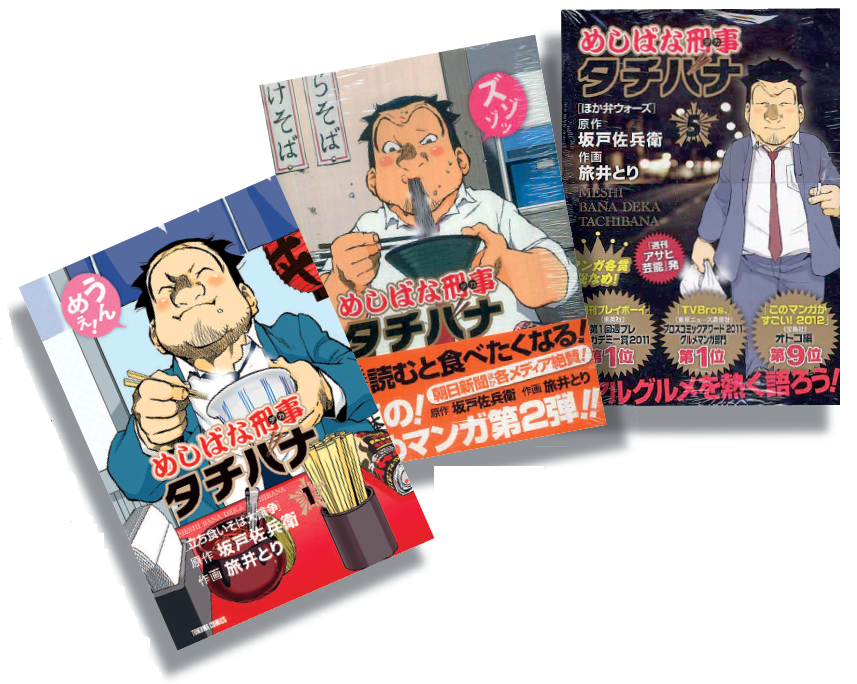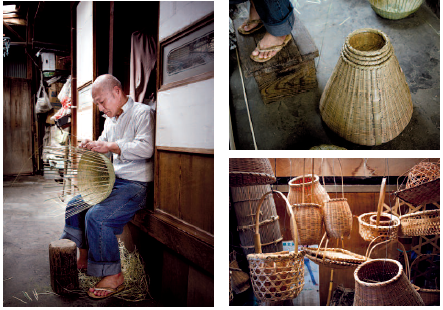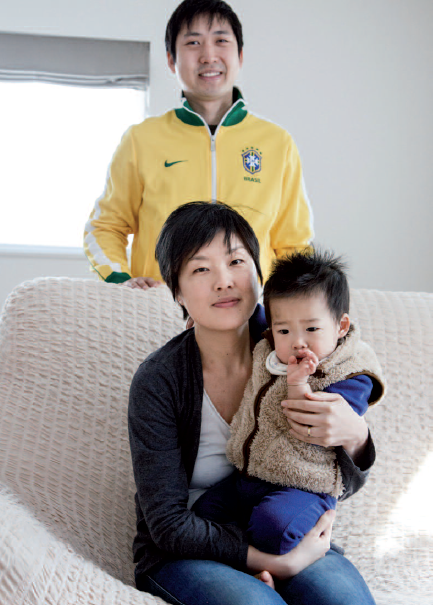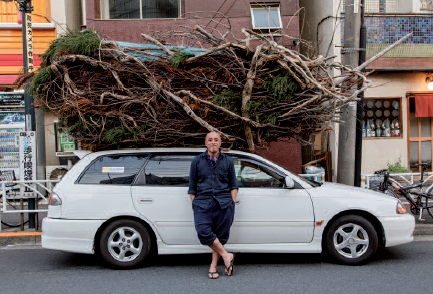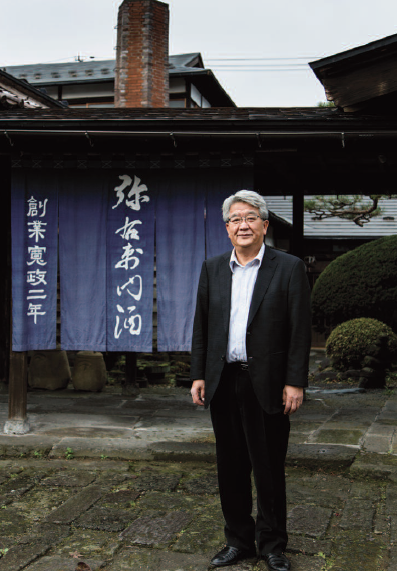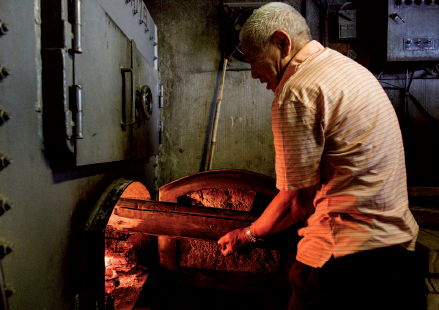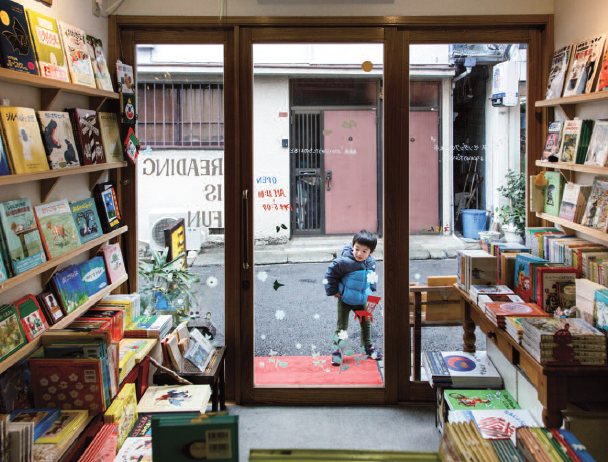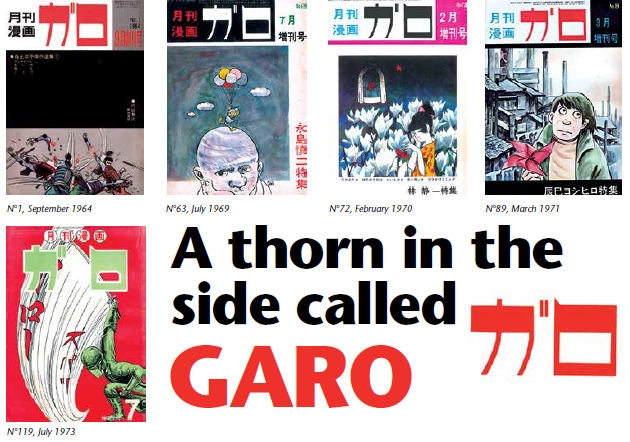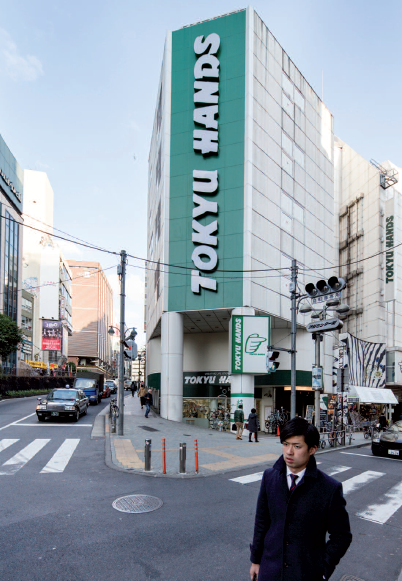
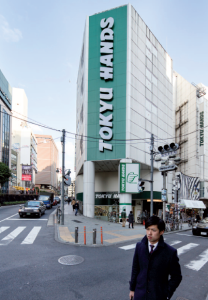 Located in the young district of Shibuya, this department store is a unique place frequented by a wide range of curious customers.
Located in the young district of Shibuya, this department store is a unique place frequented by a wide range of curious customers.
To visit Tokyo without checking out Tokyu Hands is like going to Paris without seeing Galleries Lafayette, or travelling to London without stopping off at Harrods, even for just for a few minutes. These two European department stores are part of their respective capitals’ heritage and symbolize their greatness. Tokyo does have a few grand department stores similar to those found on Boulevard Haussmann and Brompton Road, with Mitsukoshi or even Isetan being similar in concept to their Parisian and London counterparts in everything except customer service. Exemplary service is considered fundamental in Tokyo but is far from being common in Paris. However, there is one major Tokyo department store that has no equivalent anywhere in the world, a unique place in Tokyo where you can take real pleasure in getting lost – Tokyu Hands – whose flagship store was established in September 1978 in Shibuya. “It is impossible to describe such a place,” says Fukumoto Kazuhiro, who has been running the store for 18 years. “Strictly speaking it is neither a grand department store, nor a Do It Yourself (DIY) retailer, or even a warehouse”. Tokyu Hands is a hybrid store that, just like the Toyota car, brings together different parts borrowed from other kind of shops, creating a completely original and innovative place that attracts crowds of curious visitors. Every year, more than 5 million people cross the thresholds of the brand’s 28 stores spread across the archipelago, but it is still the Shibuya flagship store that perfectly sums up the brand’s dedication to cultivating its uniqueness. Fewer than 10 minutes on foot from Shibuya Station, the white Tokyu Hands building is known to all. Open 7 days a week from 10am to 8.30pm, 364 days a year (closed New Year’s day), visiting Tokyo without finding the time to explore this magical place would be unforgivable for a tourist. As disconcerting as any labyrinth, the interior was designed by an individual passionate about nearly everything, with the possible exception of fashion, but this fun-house maze like quality was exactly what the store’s founders were aiming for when they decided to create their company in 1976, two years before opening their first store in Shibuya.
Contrary to what the name suggests, Tokyu Hands is not a business owned by the large Tokyu retail conglomerate which dominates the area around the station. The chain was founded by Tokyu Land Corporation, a subsidiary of the Tokyu group specializing in real, estate and this goes some way to explaining why its concept is unique. The store does not relate to any other kind of existing business: its location, right next to Parco, which opened in 1973 as a prime fashion venue, illustrates well the thinking that motivated the store’s creators. Built on a former church site, Tokyu Hands Shibuya must have benefitted from divine grace as it has enthralled so many people these past 35 years, despite it being so difficult to sum up its concept in a just a few words. Indeed, Tokyu Hands is not only a place where you’ll find everything you’ve ever needed for your DIY or to show off your creative side, but it is also a place where an incredible variety of ordinary items and products are gathered together alongside novelties that few will ever have known about before setting foot on one of the six floors of this enthralling bazaar. Most customers seem to enjoy browsing around without any particular purpose as they know that at some point they will come across something to provoke their curiosity. The staff of Tokyu Hands is perfectly briefed about this type of shopping. The company employs 2,906 people, including 274 people just for the Shibuya store. Some staff members make their way from floor to floor, on hand to give any information or advice customers may need when faced with a particularly amazing item or even just one of the 200 models of tooth brush. As explained by Wada Kenji in Tokyu Hands no Himitsu (The Secrets of Tokyu Hands, Nikkei PBsha, unavailable in English), the store is at the root of the “Long Tail” retailing concept. Popularized in 2004 by the American Chris Andersen, it describes a marketing strategy – also used by Amazon – to sell a large number of different products but each in small quantities. On top of this, Tokyu Hands has managed to create an atmosphere that is entertaining and appealing without being ostentatious. This must explain in part why the shop is visited by a wide variety of customers. Men and women, young and old, mad about DIY or just enjoying creative hobbies, students and school kids – everyone finds what they’re looking for here. “Everyone knows that Tokyu Hands is the place to go if you can’t find what you’re looking for anywhere else,” assures Mizoguchi Hiroshi, number two at the Shibuya store. The store is good when looking for a specific item but it is much more fun to wander up and down the labyrinth of stairs leading to the store’s different floors on the lookout for something that catches the eye. It is very likely you won’t be able to resist one of the many items on show. In the items on the shelves you can see mankind’s limitless imagination and our capacity to entertain and be entertained. Tourists who are in the know about Tokyu Hands come to experience this endless variety and it is a joy to watch them explore. Seeing them in the stationery section for example, trying out doodling with thousands of different kinds of pens and note pads. Such enthusiasm and wonder is infectious and you will soon find yourself searching around the next corner looking for more exciting novelties.
Odaira Namihei
Photo: Jérémie Souteyrat


